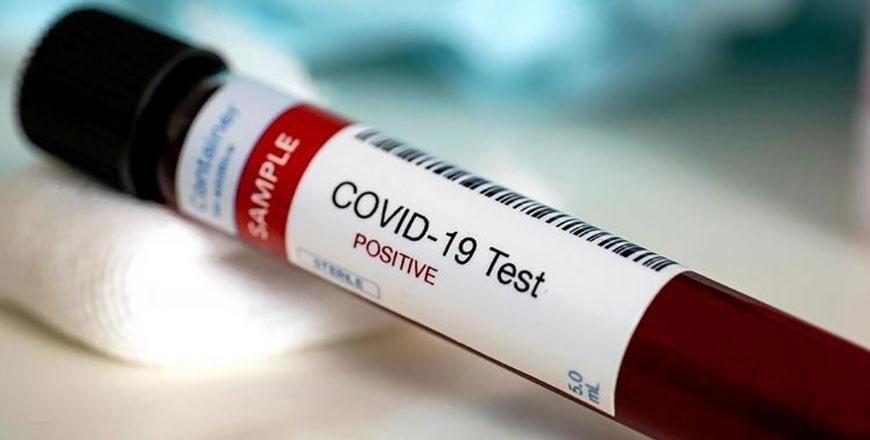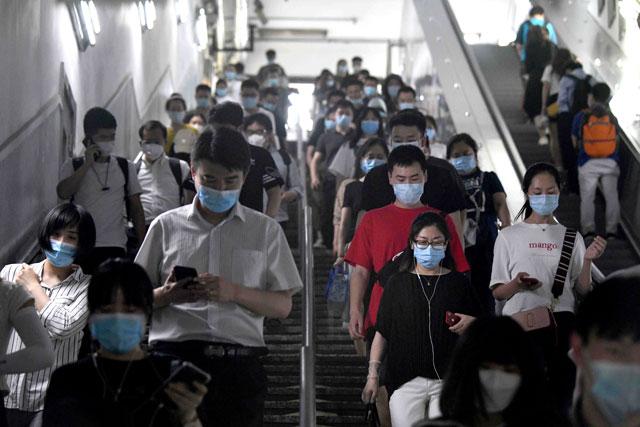You are here
Study by UJ researchers aims to support health authorities in predicting virus spread
By Maria Weldali - Jul 09,2020 - Last updated at Jul 09,2020

A group of researchers from the University of Jordan has published a study to support epidemiological inspection teams in predicting the number of coronavirus cases to occur within a given period (Photo courtesy of the University of Jordan)
AMMAN — A group of researchers from the University of Jordan has published a study to support epidemiological inspection teams in predicting the number of coronavirus cases to occur within a given period.
The article, titled “The estimation of the probable outbreak size of the novel COVID-19 in social gathering events and industrial activities”, was published in the International Journal of Infectious Diseases (IJID).
The model estimates the potential outbreak size of the novel coronavirus at various community gathering spots, referred to as clusters, depending on the basic transmission number represented as “R0”, an essential parameter in epidemiology, the principal investigator of the research project Motasem Saidan told The Jordan Times in a phone interview on Wednesday.
Saidan, a professor in the University of Jordan school of engineering, said that the research team has designed a dynamic mathematical model based on various calculations and metrics to estimate the wide range of R0 values, which refer to the number of infections expected to stem from one infected individual in a given population.
If the R0 has a value of one, then the infected individual is expected to infect on average only one person, according to Saidan, noting that if the R0 is below one, it means that the number of cases is dropping and that the virus is likely to disappear from a given population.
An R0 greater than one suggests that the virus is still spreading, necessitating a different approach to mitigate the outbreak, he added.
The R0 varies depending on environmental factors, frequency of social interactions and the type of gathering or corporate events that induce infection susceptibility and transmissibility, Saidan said.
The risk of COVID-19 spreading at weddings is “high”, the scholar noted.
“In these particular gatherings, emotions run high and most persons greet each other with a handshake or a cheek kiss,” therefore weddings show a five, the highest R0 value, followed by religious gatherings with a 2.5 R0 value. The lowest R0 value was found in industrial clusters, he added.
“The outbreak size changes from place to place and it is largely affected by the type of social behaviour in different clusters, therefore the mathematical model acts as an anticipatory governance tool, by helping shape emergent and immediate policy response,” Saidan noted.
“What distinguishes this model from other models that map the future outbreak is the fact that this model follows numbers” which could be implemented on large populations or a very small number of people in a specified spot, unlike “the majority of models that submit heterogeneous samples, decreasing their accuracy rates”, the professor said.
“This model has proven to carry a 93 per cent accuracy rate and has been implemented in many cases that represent hotspots of the virus, including Australia, South Korea, Chile and Malaysia, in addition to Jordan,” Saidan said.
The model forecasts daily and weekly infections within 14 days, therefore it is considered a key factor in capturing future cases. It can help policy makers shape emergent and adaptive actions to limit the virus, according to the scholar.
“We modelled the worst-case scenarios and worst possible outcomes for the National Centre for Security and Crisis Management, gearing towards being better prepared,” he noted.
The IJID is an open-access, peer-reviewed monthly journal that publishes original clinical and laboratory-based research and reports on epidemiology, clinical diagnosis, treatment and control of infectious diseases, according to its official website.
Related Articles
PARIS — At churches, on cruise ships and even in the White House, superspreading events that can sicken dozens, even hundreds, of people hav
AMMAN — Sixty-three virus cases, including 59 local infections were registered in the Kingdom on Tuesday, increasing the caseload since the
BRUSSELS — A raft of EU nations reopened their borders to fellow Europeans on Monday after months of coronavirus curbs, but China was battli













